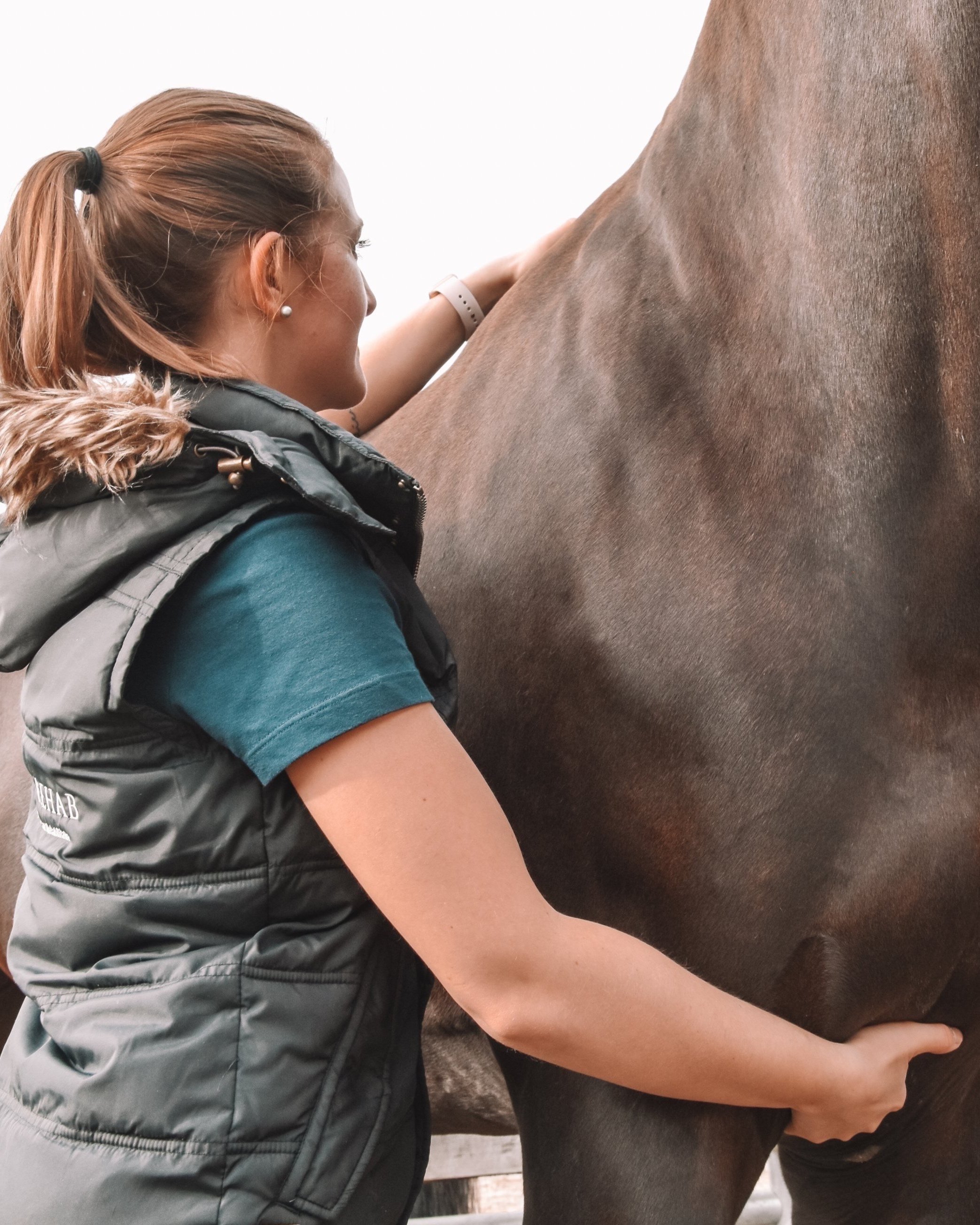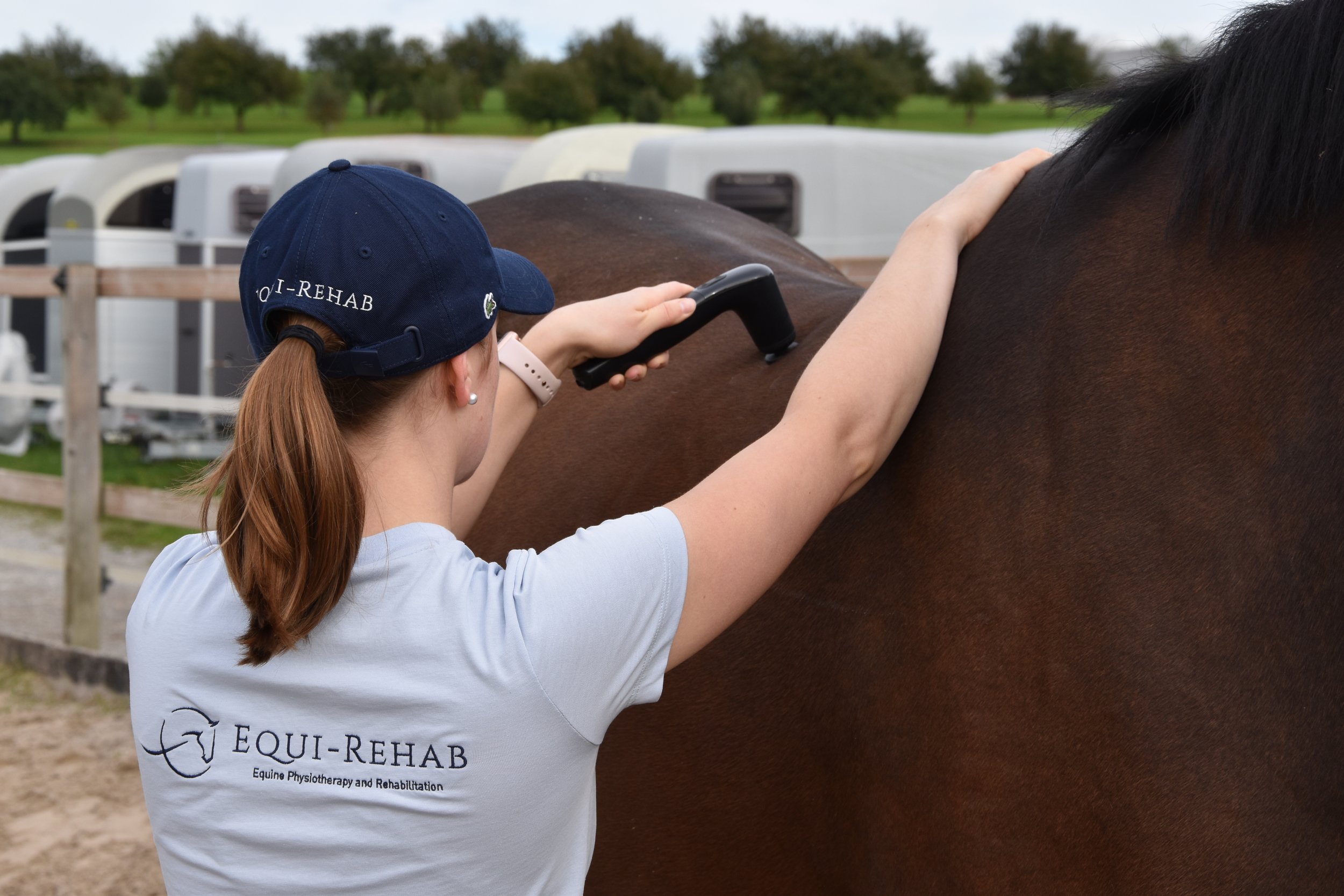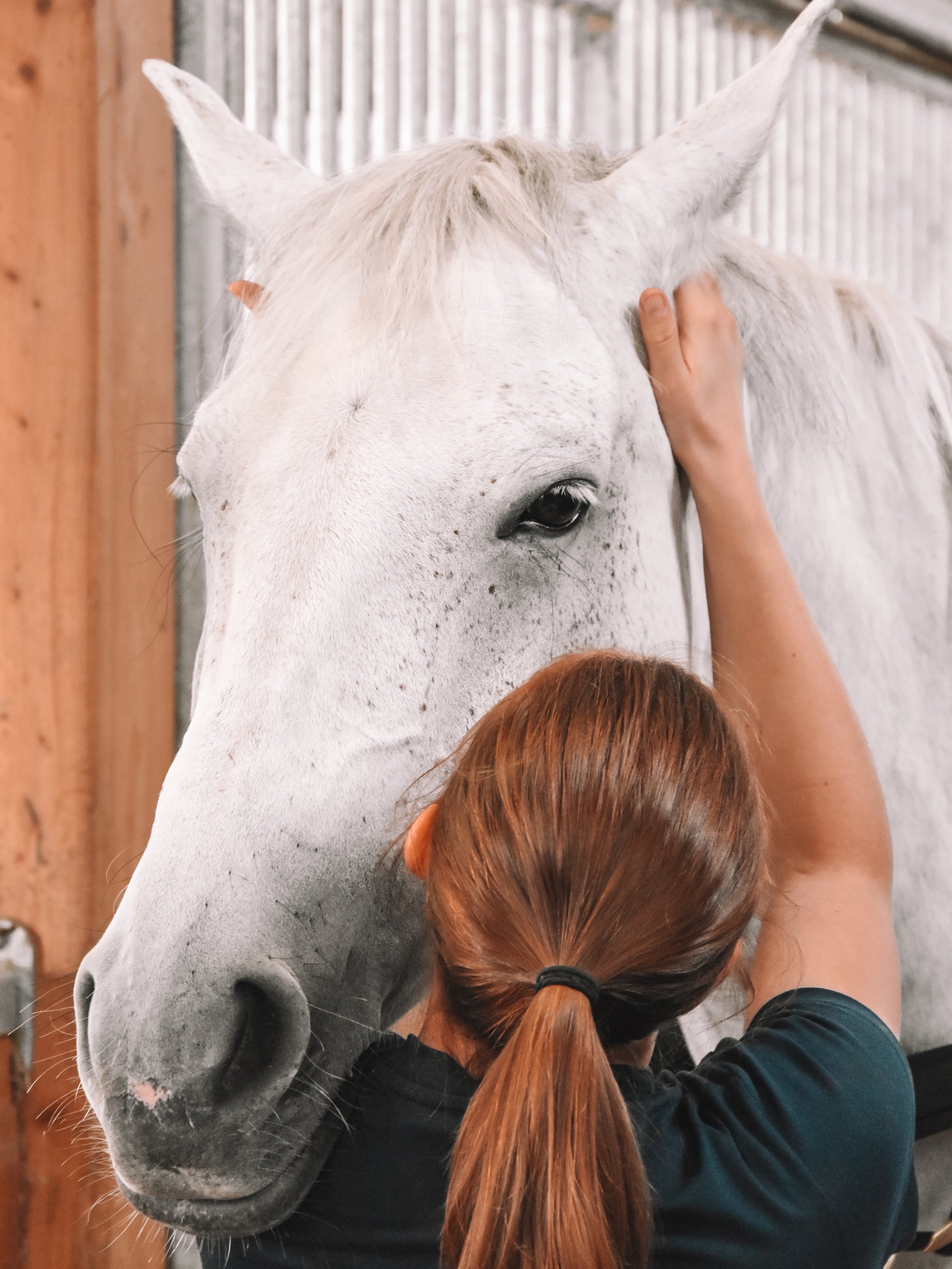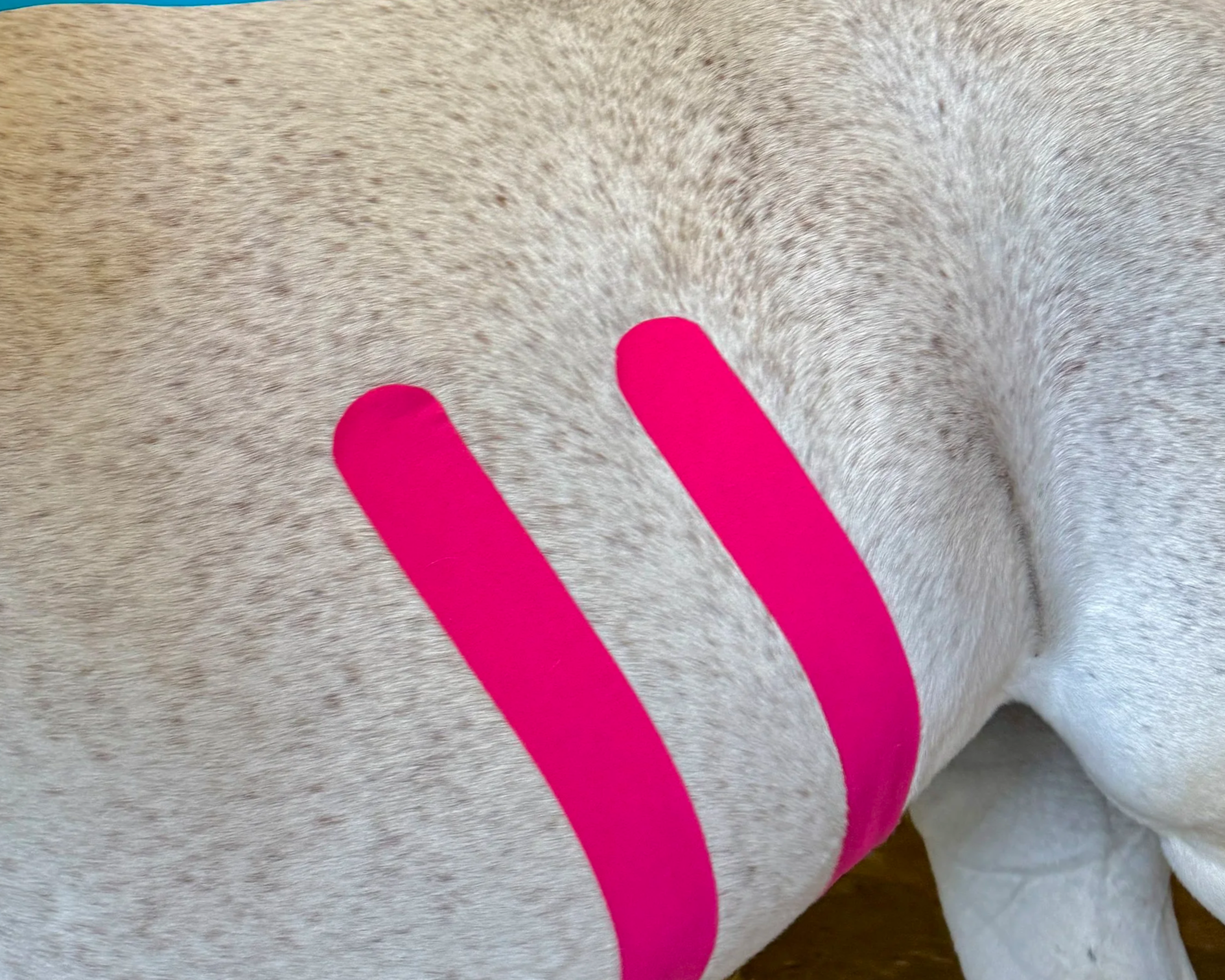Physiotherapy
Are you looking for the best support for your horse across German-speaking Switzerland? At Equi-Rehab, we combine expert knowledge with a holistic approach to ensure your horse feels good, stays healthy, and reaches its full potential.
-
Manual therapy encompasses various manual techniques primarily aimed at improving the body's mobility.
These techniques include, among others, joint mobilizations, stretches, and various massage techniques. Treatment with manual therapy has several therapeutic effects, including enhanced mobility and a greater range of motion, pain relief, improved blood circulation, stimulated metabolism, and support for detoxification.
-
The fascial system is often described as a singular, continuous body fascia that extends three-dimensionally throughout the entire body. This implies that a localized restriction in one area typically has a cascading effect on other regions. Furthermore, fascia and muscles form an inseparable functional unit, necessitating their concurrent consideration in therapeutic contexts.
Given the complexity of the fascial system, a variety of fascial and myofascial techniques are employed in combination. For example, a specialized form of deep tissue massage has shown remarkable effectiveness in improving performance in sport horses, contributing to enhanced competitive results.
-
Biomechanical stimulation and Matrix Rhythm Therapy represent a crucial aspect of long-term regeneration and self-healing processes.
Subtle vibrations within the low-frequency range of 8-12 Hz simulate the natural rhythm of the intercellular matrix. This non-invasive micromobilization promotes cellular metabolism and facilitates the restoration of key tissue functions. Consequently, it is employed in the treatment of scar tissue and tendon injuries. Given its broader effects on muscle tone, metabolic processes, general well-being, and overall performance, biomechanical stimulation also proves to be highly effective in addressing muscular imbalances in equine subjects.
-
Local vibration therapy is employed in the management of both acute and chronic pain conditions. This modality utilizes an ultrasonic device that has demonstrated significant efficacy, particularly within the veterinary field.
The application of variable frequency ranges has proven to be highly effective, with horses typically adapting well after a brief acclimatization period, even those initially skeptical. This therapeutic approach is particularly effective for alleviating tension in hypertonic musculature, such as the trapezius and intercostal muscles, among others.
-
Acupressure according to Traditional Chinese Medicine (TCM) is a non-invasive treatment method. Depending on the specific characteristics and symptoms of your horse, selected acupressure points are identified and applied.
To achieve a sustained therapeutic effect with acupressure, you will receive a detailed instruction to enable you to continue administering the treatment to your horse independently.
-
As a complement to equine physiotherapy, equine taping supports muscles, fascia and joints using specialized therapeutic tapes designed for veterinary use. It promotes regeneration, enhances the lasting effects of treatment and is applied individually according to each horse’s condition.
Tapes are used as needed and are subject to a small additional charge.
Additional services
Competition assistance
Are you an equestrian competitor looking for professional competition support for your athletes? We would be happy to accompany you.
Physiological lunging
You wish to build up your horse in a targeted and gentle way on the lunge?
We promote balance, muscle development and suppleness – individually tailored. Contact us to start your training!
FAQ
-
Equine therapy can be used preventively to maintain soundness, acutely to address existing limitations, and rehabilitatively to aid recovery from injury or illness.
A veterinary evaluation is required for lameness, traumatic injuries, or underlying health conditions before therapy can begin.
Examples of when treatment may benefit your horse (this list is not exhaustive):
Stiffness in specific body areas
Pain associated with the musculoskeletal system
Gait irregularities
Decreased performance or loss of stamina
Sport horse management
Enhancing overall condition
Chronic conditions
Rehabilitation after injury or surgery
Behavioral issues
Resistance to work or training
-
You are welcome to exercise your horse prior to the treatment; however, we recommend a cool-down period of 30–45 minutes. Additionally, please present your horse clean, dry, and with its hooves cleaned out for the examination.
-
Medical History and Consultation with the Owner
Acquisition of the horse's medical history
Definition of treatment objectives
Gait Analysis
Observation of movement patterns at walk and trot
Examination and Physiotherapeutic Assessment
Inspection: Visual assessment for asymmetries, swelling, skin abnormalities, and other clinical signs
Palpation: Manual assessment through palpation of musculature, joints, and ligaments
Treatment
Application of individualized treatment techniques based on the specific needs of the horse
Post-Treatment Care and Exercise Protocol
Discussion of subsequent steps, including exercise and training recommendations
Follow-up and Monitoring
Regular follow-up evaluations to assess treatment progress and adjust therapy as needed.
-
The treatment typically lasts 75 minutes, with the initial session, including medical history, taking up to 90 minutes. Pricing information is available upon request – please feel free to contact us for further details.
-
Following the medical history, gait analysis, and physiotherapeutic assessment, the results will be discussed, and appropriate treatment methods will be selected.
Feel free to express any preferences, questions, or concerns!
-
After the treatment, you may walk your horse for a few minutes and then allow it to rest. For the following two days, ample turnout and only light work, such as pasture time or gentle lunging, are recommended.
-
Equi-Rehab is currently operating in several Swiss cantons for you and your horses:
Thurgau
St. Gallen
Zurich
Schaffhausen
Schwyz
Further regions upon agreement!
-
Yes! The canton of Thurgau is served, which requires a permit. For this, a permit for the practice of a regulated paramedical veterinary profession has been issued by the Veterinary Office of Thurgau.






